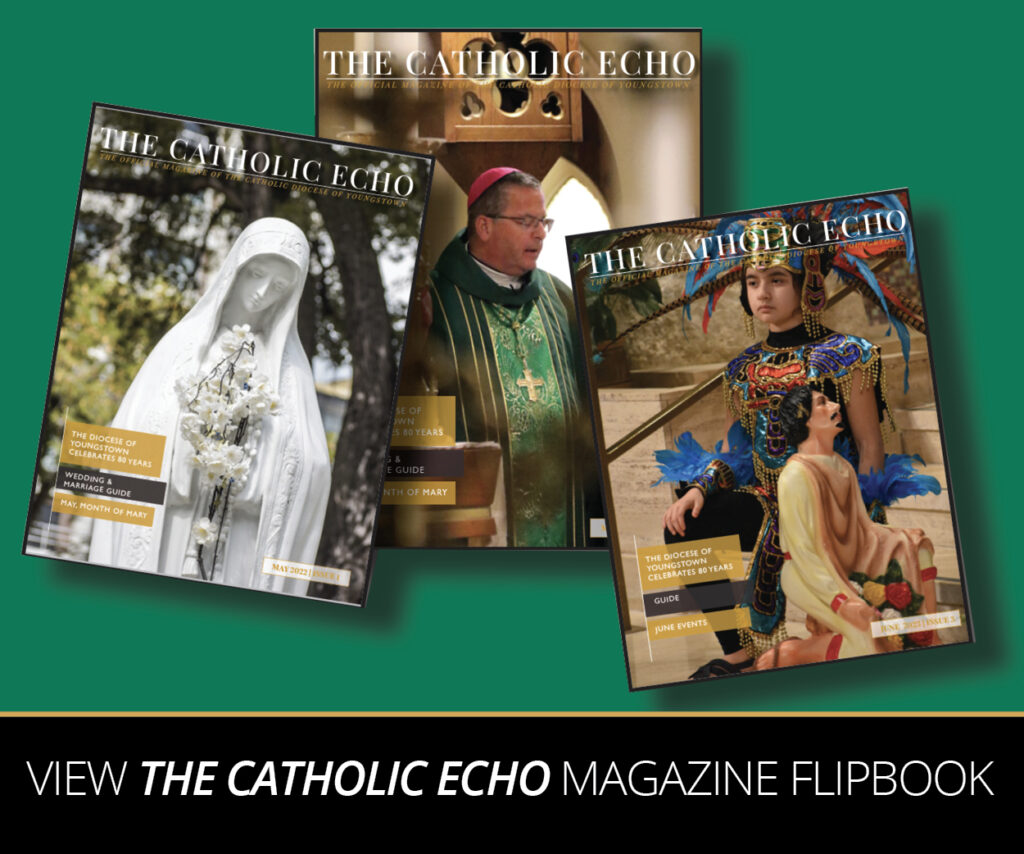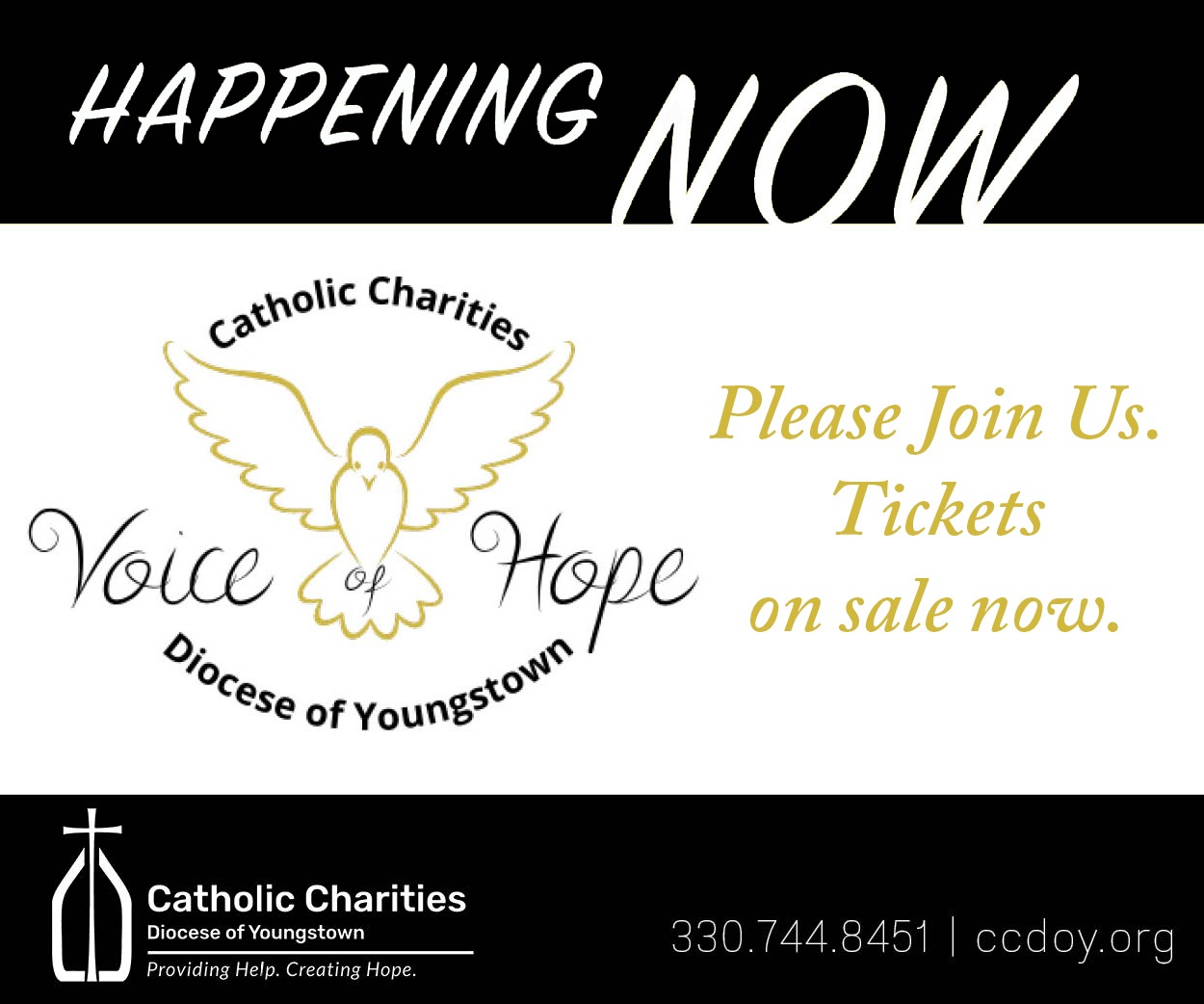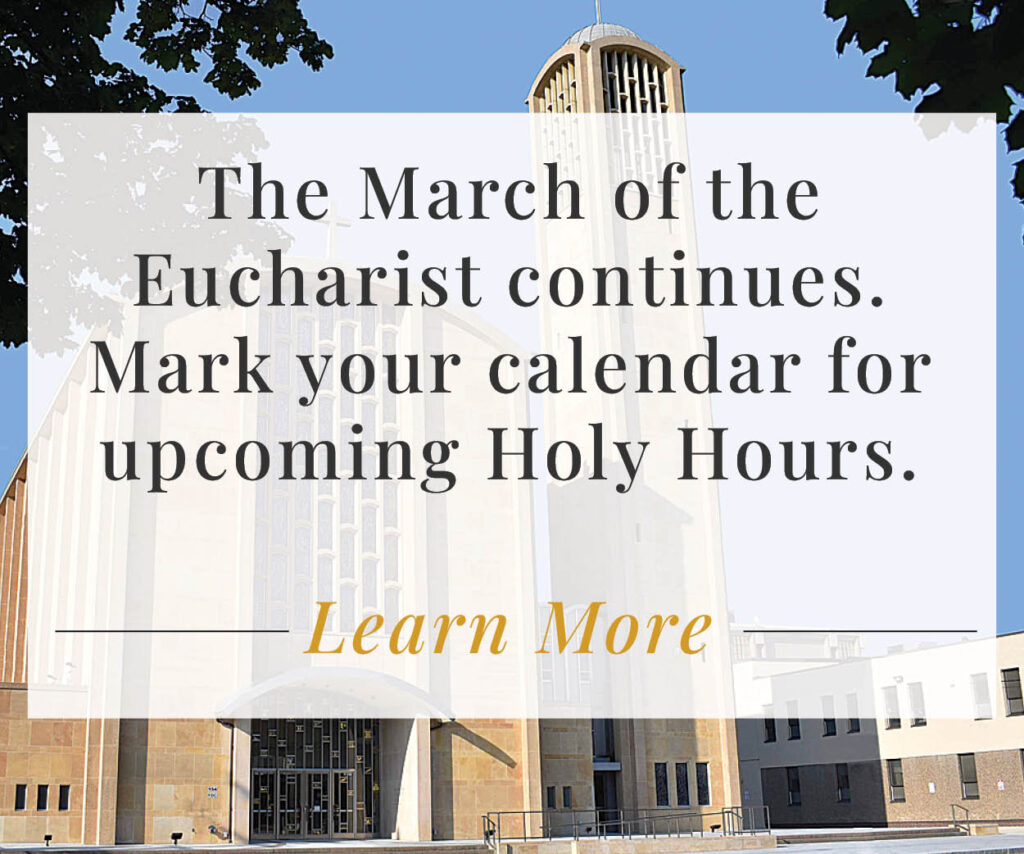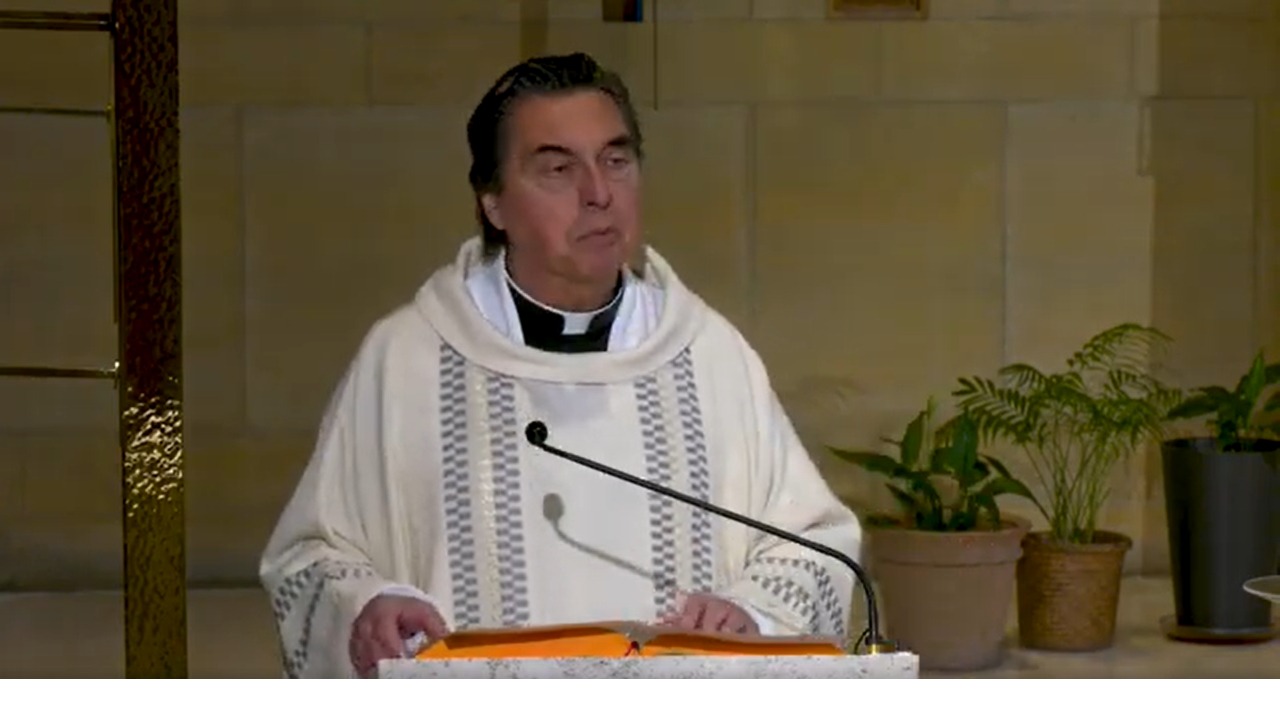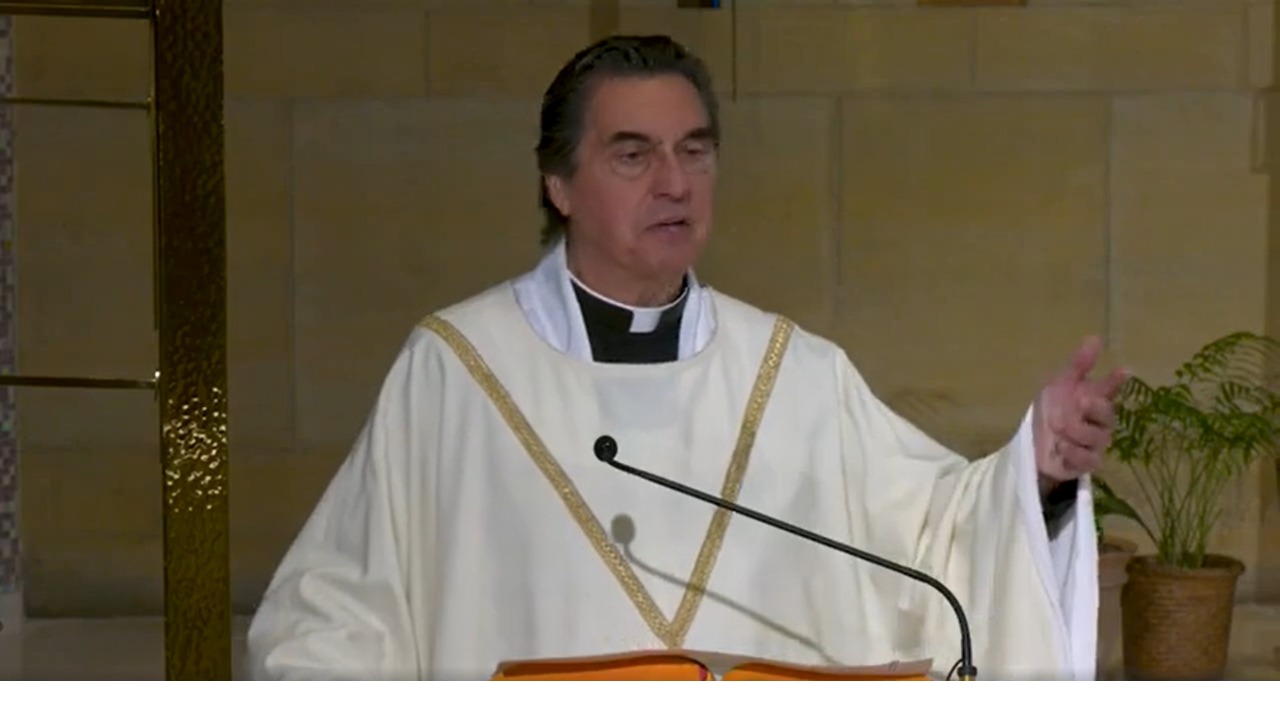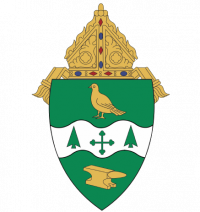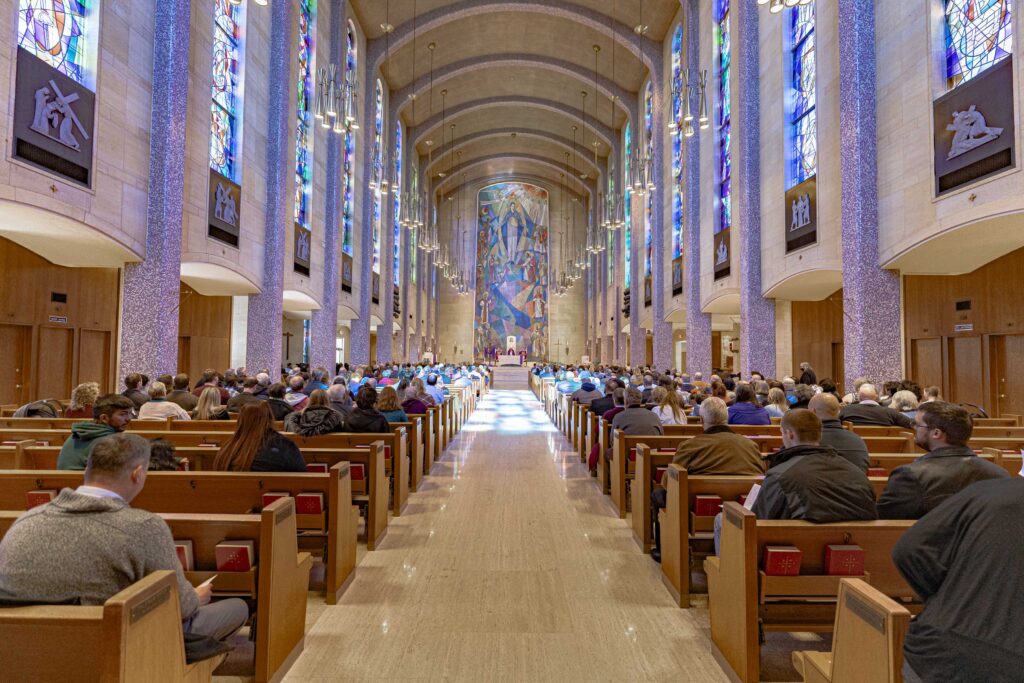
Nearly seventy years ago, St. Columba Cathedral was destroyed by fire during a late evening storm on September 2, 1954. According to news accounts of the day, firefighters and first responders found the blaze well under way. Eleven fire departments throughout the Mahoning Valley combined their efforts to put out the fire. The many men and women throughout the diocese rallied together to raise funds to build a new Cathedral. It took just over four years to demolish, design and rebuild St. Columba Cathedral as we know it today. Work was completed on November 9, 1958, the Feast of the Dedication of the Basilica of St. John Lateran in Rome, and dedicated on Sunday, April 12, 1959.
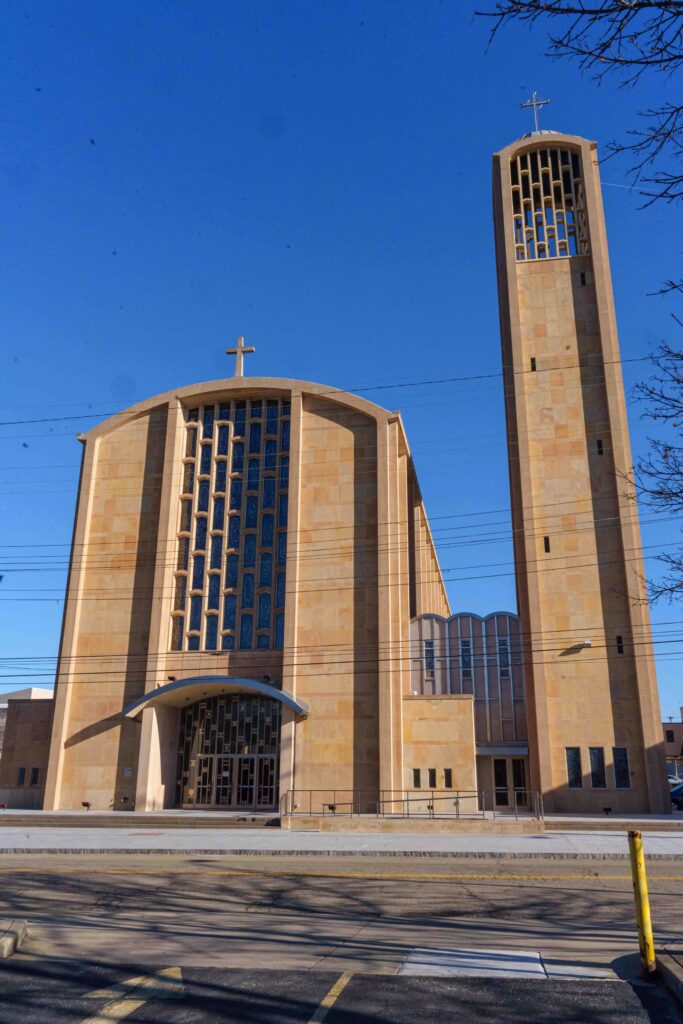
Our Cathedral was constructed to reflect the modern world at that time, just four years before Vatican II began. From the beginning, St. Columba Cathedral has undergone many changes to accommodate the evolutions within the liturgy and stylistic trends. Designed by Diehl and Diehl Architects of Detroit, Michigan, the building was constructed under the leadership of Bishop Emmet Walsh, by the Charles Shutrump and Sons Company of Youngstown, using the best materials available from local resources and across the globe. To put things into perspective, the original cost of St. Columba Cathedral was more than $3 million. Today, this would exceed $31 million. The people of our diocese made profound sacrifices—not only so that they could gather in worship—but also with all of us future Catholics in mind.
Described at its dedication as “Romanesque in nature,” we can now see the influence of the modern era. The design was a radical departure from the gothic influence used in the previous cathedral. Now known as Late Mid Century Modern style, with a soaring nave, St. Columba Cathedral has proudly withstood the test of time.
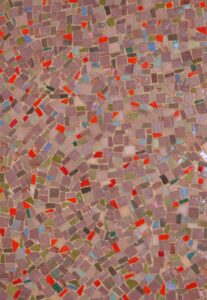
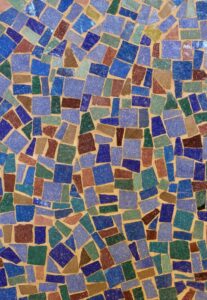
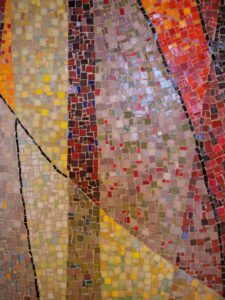
Photos by Michael Houy
Dominating the interior and lining the back wall of the sanctuary is the mosaic. Much thought was given to the use of this sacred space; notably, a sense of approachability and practicality, which offers an unobstructed view of the sanctuary. The base of the mosaic is measured at 25 feet wide and soars upward 60 feet, narrowing slightly to create the illusion of height through forced perspective. It covers an estimated area of approximately 1,500 square feet. Each square foot contains on average 600 pieces of glass, cut and fit together, to create this monumental backdrop. Approximately 300 distinct shades of glass tiles were used. Designed by the Ukrainian artist Michael Dmytrenko and installed by Andrew Maglia Studios of Florence, Italy, the image honors the Immaculate Conception of the Blessed Virgin Mary, Patroness of the United States.
Throughout the years, the mosaic has been referred to as Our Lady of the Nations, as the Saints depicted were chosen to represent the ancestral homes of the women and men who built the Diocese of Youngstown. Mary is depicted as the Queen of the Universe, and is surrounded by the Patron Saints of each nationality.

The upper right corner depicts the creative hand of God, with an angelic choir. In the top left of the mosaic is the angel Gabriel of the Annunciation, soaring through the heavens. The largest central figure is that of our Blessed Mother, with a crown above her head. The magnificence of the colorful backdrop forms an almond shape or “Mandorlo” surrounding her. Sweeping lines of color and form lead the viewer’s eye throughout the composition. Saint Francis Xavier Cabrini, also known as Mother Cabrini, the first canonized Saint of North America, represents all immigrants, and particularly those of Italian descent. She is at the upper right hand of the Virgin Mary. Below her is Saint Nicholas Tavelic, a Franciscan friar and missionary, and martyr from Croatia. Next we see Saint Maron, of the Maronite Rite, and Saint Nicetas, representing the Romanian Byzantine Rite. Both of these saints represent distinct dioceses within the territory of the Diocese of Youngstown. Next is Saint Thomas More, depicted in his legal robes as the Patron of England, then Saint Martin de Porres, a Dominican lay brother from South America, who is the patron saint of people of mixed race, public schools and those who work for public health institutions. At the bottom is Saint Patrick, Bishop of Ireland, depicted in his Episcopal robes with the snake at his feet, and Saint Casimir, a Lithuanian King.
At the Virgin’s left hand are Saints Peter and Paul, prince of the apostles and apostle to the gentiles respectively, inseparable within the Church’s Liturgy, companion saints in the mosaic. Below them are Saints Cyril and Methodius, who represent the strength of Christian love, having translated the Bible into the Slavic language. Behind them is Saint Boniface, with his episcopal crozier and mitre, who organized the church in Bavaria, Germany. Below this group is Saint Stephen of Hungary, wearing his crown with a bent cross. Below him are two figures, Saint Louis, King of France and Saint Stanislaus, Bishop and martyr—patron of the Polish people. These images are made from glass with a satin finish, some of which are gilded with gold leaf.
The immensity of this image is surpassed only in its meaning and connection to the people that it represents within the Diocese of Youngstown. While it serves to unite us to the larger Church, it also functions to emphasize the significance of the contributions made by the people of God. It is a modern work of art that highlights a more personal aspect of those represented. Depicted here are Bishops, priests, women and men, kings and paupers—they not only make up the heavenly kingdom, but also can be found within the diocese.
In the presence of the Mother of God, all classes of society are represented, all of which are portrayed with a spirit of pride and dignity. The image is a readable narrative, a homily to all those that walk through the cathedral doors. This iconography was designed and intended as both sign and symbol of our ancestry, gathered together as one. The one Body of Christ, imbued with meaning, glass embedded in cement, set in stone with unfading and unwavering beauty, as a testament to those sacrifices of our past, and the hope for our future.

